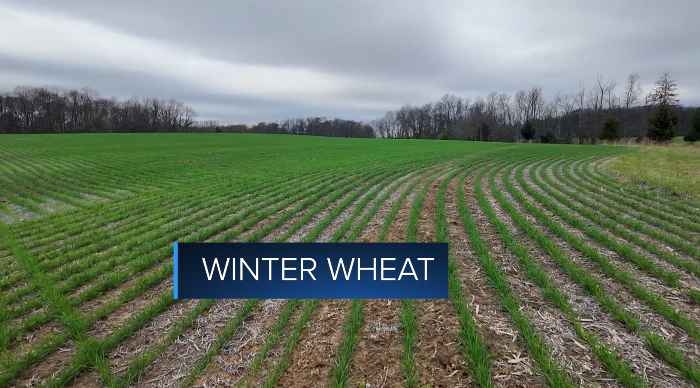HENDRICKS COUNTY — There's a lot going on around the farm through the winter season.
With fall harvest complete and grain in the silos, you might not realize that there are still things growing in many farmers' fields.
Margaret Gladden, a farmer in Hendricks County, showed WRTV a field of cover crop — oats and radishes. The field was planted shortly after harvest.

"The cover crops help to break up the soil," Gladden explained. "And add nutrients back into our crops, to help get them ready for next year's crop."
The green plants keep growing as winter gets started.
"Once we get a good hard, hard freeze, then these will die out," Gladden continued. "In that time, it's adding all those nutrients that we need and want for our soil."
The oats and radishes will not be harvested, but they will stay in the field through winter until spring tilling.
Other crops grown during winter, like winter wheat, are planted to be harvested. Wheat can withstand not only winter temperatures, but also snow.

In January 2025, WRTV visited one of Luke Dougherty's fields in Johnson County. A blanket of snow covered the ground, but as we dug into the snow, we found a field of green plants.
"The snow has made kind of an insulated blanket over the top of the soil, and kind of helped it warm up some," explained agronomist Tyler Gabehart, who also was visiting at Dougherty's farm.
The wheat goes dormant through winter, then wakes up again in spring and is ready for harvest in summer.
Not only does winter snow insulate crops, but it also mitigates drought conditions. Drought became a concern for lots of Central Indiana in the fall of 2025.
"Our weather pattern is certainly becoming more extreme," Dougherty shared. "Seems like when we go dry, we go very dry."
"Snow is good because that's going to add more moisture into our ground," said Gladden.
However, snow is not nearly as welcome for livestock farmers. In January 2025, Katie Brock Pennington was at her Hendricks County farm, which was covered in snow. She told me what she and her family members do to keep their cattle safe.
"We call this our survival mode," Katie Brock Pennington said during my snowy visit. "We need to make sure that we're doing everything we can for the cows."

There were a lot of steps to ensure the herd stayed alive.
"We'll bust ice, make sure everybody has water, good, fresh water," explained Brock Pennington. "We had to dig everything out and make them a spot to lay."
The family makes paths for the cows to walk and puts bedding down to keep them warm. They also feed the cows later in the day during cold, snowy days, as digestion creates heat, and the family wants the cattle to have that added heat through the coolest parts of the night.
Through winter, farmers also keep busy by working on any farm equipment that needs maintenance from the previous season.
All this work through the cold months prepares farmers to move into spring, because the cycle of farming and seasons never stops.



